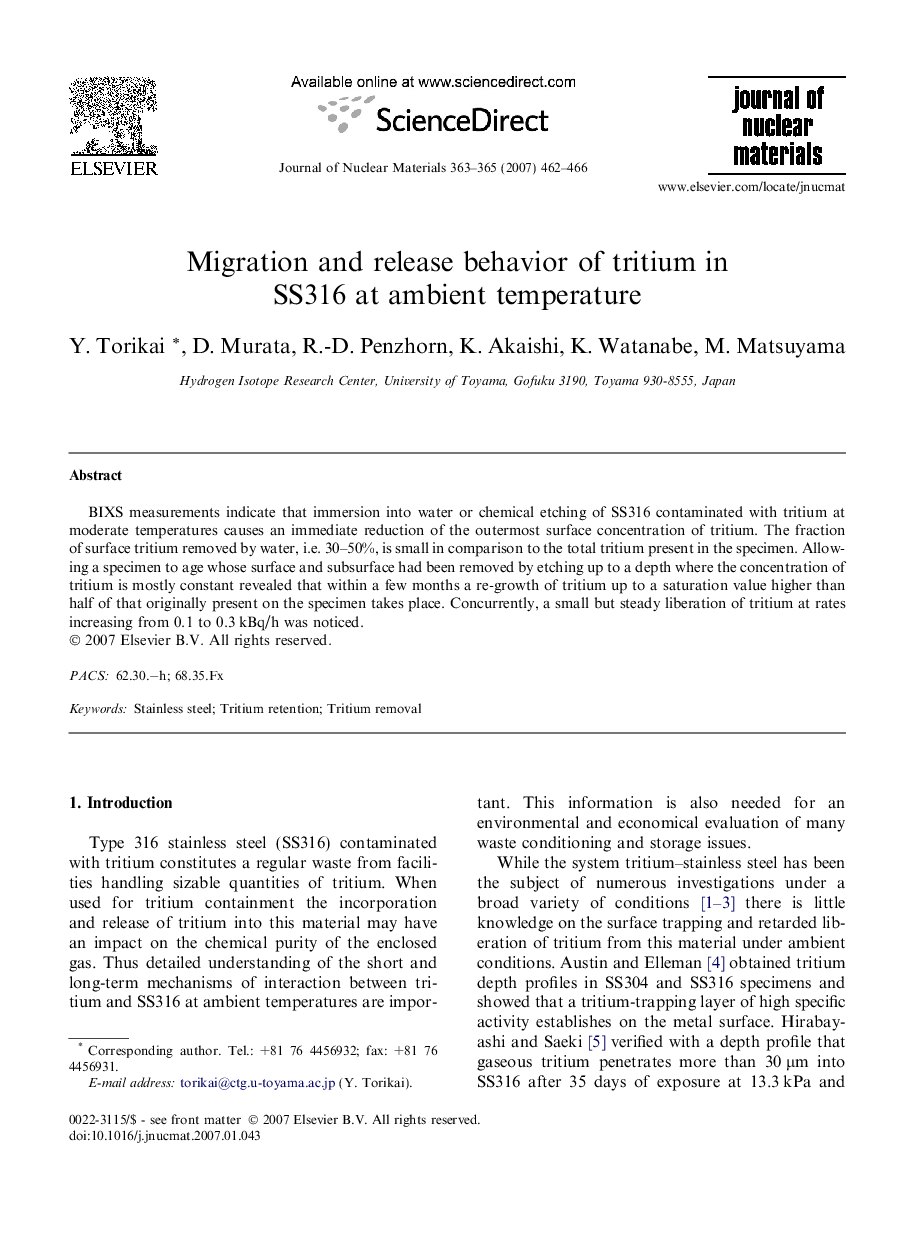| Article ID | Journal | Published Year | Pages | File Type |
|---|---|---|---|---|
| 1569225 | Journal of Nuclear Materials | 2007 | 5 Pages |
BIXS measurements indicate that immersion into water or chemical etching of SS316 contaminated with tritium at moderate temperatures causes an immediate reduction of the outermost surface concentration of tritium. The fraction of surface tritium removed by water, i.e. 30–50%, is small in comparison to the total tritium present in the specimen. Allowing a specimen to age whose surface and subsurface had been removed by etching up to a depth where the concentration of tritium is mostly constant revealed that within a few months a re-growth of tritium up to a saturation value higher than half of that originally present on the specimen takes place. Concurrently, a small but steady liberation of tritium at rates increasing from 0.1 to 0.3 kBq/h was noticed.
